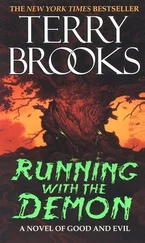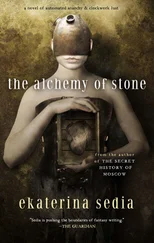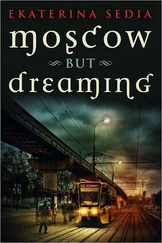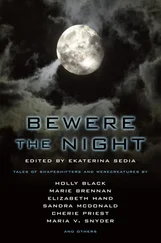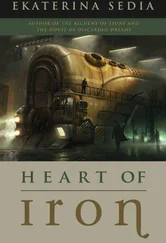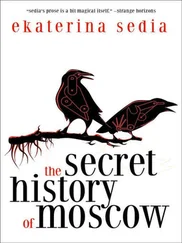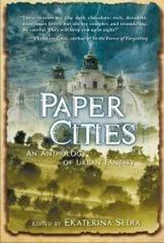She didn’t know him at all well and sometimes couldn’t even remember that his name was Timothy.
She was certain that she’d never been particularly drawn to blood-drinking or soul-slurping. So the phenomenon, until these minor breakthroughs, had remained quite a mystery.
The process, of healing or of “learning to embrace her true preponderance of selfhood” or whatever it was she was trying to do—whatever it was she was trying to accept now that she was finally chipping through her grungy patina of self-resignation—began when she consulted the family physician at her yearly checkup.
Yvette hadn’t wanted to schedule a special appointment just to discuss her nightmare of devouring Timothy.
Dr. Burningheart squiggled several notes on his clipboard before eventually chuckling and saying, “I’ve known your parents for almost twenty-six years and we didn’t want to pressure you or tell you before you were ready, but you’re going to have to choose between being a vampire or a goblin.”
Yvette hadn’t liked the sound of either choice, but her dreams had cost her several jobs—including hostessing at a lovely supper club—so she asked, “Will that make the nightmare go away?”
“Probably not, but finding your true incarnation might help you learn to enjoy the nightmare . . . ”
“I’m not very familiar with all this.”
“None of us are. The last thing my patients want to find out is that we’re all responsible for our own wellness and that wellness has a rather healthy time commitment. Few, at first, are comfortable with the idea of killing in order to live. It takes time to make a thorough adjustment.”
“What’s the difference between vampires and goblins?”
“That reminds me of a joke that gets me slapped. We used to think they were quite similar, but recent research believes that the distinction is decided by motive: vampires eat people because they want darkness while goblins eat people because they want souls.”
“So I have to figure out why I want to eat people? That’s gross.”
“ Everyone has to figure out what they want, not just you. It’s tough but that’s how it is. Anyone who says that life is easy is lying through their teeth.”
Yvette was certain she didn’t want to eat people for any reason, so she started screaming uncontrollably.
The police were kind. They took Yvette to the gothic halls of the Willis & Rothgate Institute, inaugurating her visits.
Yvette was getting used to visiting Willis & Rothgate too. Further episodes of uncontrollable screaming were why she was no longer hostessing at the supper club and why she’d lost most of her other jobs. She’d even been fired from a tobacconist’s shop. They hadn’t minded the screaming but—no matter how hard she tried—she couldn’t smoke enough to be a convincing saleswoman. Even hardcore tobacco fiends are put off by a saleswoman who coughs and gags frequently.
Because of her nightmare, the Willis & Rothgate Institution became her second home. She learned to adore how the orange gelatin tasted spicy like Mexico and the blue gelatin tasted like the planet Earth looked in satellite photos.
And the staff was carefully trained in non-confrontation. Non-confrontation, Drs. Willis and Rothgate believed, was the most caring approach for helping the clients they called bispecials. Yvette liked the idea of being special, just hated the consequences that came with it.
Her room at the Institute had a machine that could read her thoughts and play music that fit her mood. And they brought her fresh flowers every night. The methods of non-confrontation believed that the pleasant stimuli of flowers led to purer dreams.
The staff was exceedingly nice—even when they took away the horridly nasty flowers every morning—though, once, a few candystripers held their noses and commented that no one had ever blackened so many flowers.
Bispecials, she learned early on, in classroom sessions called Chalk Talks, were exceedingly rare. Most people were just people. They could no more become a vampire or a goblin than they could become a time-traveling wombat or an Oriental rug, but some people did become vampires—no need to bite the neck, you could bite the big toe or solar plexus if you preferred—and some people wanted to drink blood so badly that a stray force, unknown powers with an electric crackle of menace, just let them turn into a vampire.
Other people, for equally nebulous reasons, became goblins, and a truly rare minority manifested slight signs in both directions and then had to consciously decide whether they wanted to be a vampire or a goblin. Bispecials had to choose which characteristics they wanted to embrace, as difficult as the decision could be for more sensitive individuals.
The signs were sometimes so minor that they were overlooked. A penchant for doing a bad Transylvanian accent at parties or obsessing over the poems of Christina Rosetti and paintings by Pre-Raphaelites were classic indicators of impending transgressions.
Yvette learned that a bit of dander could be all it took to tilt a person’s scale. It amazed her that as little as a drop of blood could make a person irrevocably sick.
It wasn’t something people would volunteer for or want, more like being conscripted. Yvette detached from the process, understanding that purer brainwaves led to purer dreams, as if they were an attempt to get back to cleaner living. But she didn’t want this mission: the mood-reading music machine, going beyond flipping light switches in dreams to controlling the actual gradation of light, the sensory deprivation tank, orgone box, and vegan raw food diet.
Yes, Yvette saw the irony in avoiding meat and animal byproducts even though cannibalism was her likely end. She saw the irony and it made things worse. Veganism meant she had to give up the flavored gelatins that she’d liked.
Dozens of Chalk Talk sessions, some even led by the illustrious Drs. Willis and Rothgate, helped Yvette gain a greater understanding of her condition, but they never—because of their belief in nonconfrontation—urged her to come to her decision hastily. She was encouraged to take the time she needed to make up her mind.
Mutual-help groups had people who’d chosen to be goblins come in and talk about how they learned to enjoy soul-slurping. Some kept regular jobs and tried to keep their species a secret. An engaging presentation was given by a radical sect of attractive young women who were professional roller-skaters known, before an incident, as The Groovy Goblin Girls . Now, sadly, they were wanted by the police for eating audience members. Even the youngest one, who’d always been friendly and respectful, had stopped returning Yvette’s text messages.
A wealthy vampire from New Hampshire offered Yvette infinitely free room and board if she’d stay with him while she thought things over. Her various counselors and social worker considered it a dangerous idea and discouraged her from following up.
For Yvette, the hardest part was watching people from her various groups come to their deeply personal decisions, fill out the special permission slip and leave the Institute. She understood the loops of logic that people applied to their choices. She knew it wasn’t like Halloween. Being a vampire or a goblin wasn’t a vinyl mask you decided to don one day and could change later. Once you embraced a choice, actually sat down, drew the G or V at the bottom right-hand corner of the permission slip and signed it, that was it. The incarnation couldn’t be shucked or chucked; most people started to mutate, often first noticeable by elongating fangs or bulging forearms, within twenty-four hours.
You were stuck with your new incarnation, until undeath did you part.
Читать дальше

